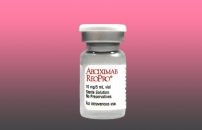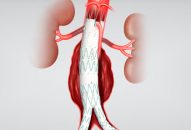The aim of this study was to compare clinical outcomes in relation to the duration of triple antithrombotic therapy in patients with indications for oral anticoagulation undergoing coronary angioplasty. The optimal period for the prescription of these three drugs has not been studied. Between 2009 and 2013, 8772 consecutive patients undergoing coronary angioplasty were included…
A New Indicator to Assess Stenosis Severity
This study looked at the role of fractional myocardial mass (vessel-specific myocardial mass) in the assessment of stenosis physiological severity. Researchers used CT angiography to study this new concept of myocardial mass subtended by a specific vessel, which could reduce anatomical-physiological mismatch. The study included 463 patients with 724 lesions evaluated by multislice…
Intracoronary Abciximab reduces events in diabetics during PPCI
Diabetic patients have an increased risk of future cardiovascular events after an ST elevation MI. Administration of an intracoronary abciximab bolus during primary PCI could be beneficial for this high risk subgroup of patients. This study reports one year clinical outcomes and CMR imaging of patients randomized to intracoronary vs. intravenous abciximab during primary…
Ticagrelor: Similar to Aspirin in Patients with Stroke or TIA
Ticagrelor might be a more effective antiplatelet therapy than aspirin for the prevention of recurrent stroke and cardiovascular events in patients admitted for acute cerebral ischemia. This double-blind, controlled trial randomized 13,199 patients from 33 countries. Subjects presented a non-severe stroke or a high-risk transient ischemic attack (TIA) (not considered as cardioembolic) and had not received…
ABSORV at Long Term in Daily Practice Lesions
This work reports one year outcomes of the BVS Expand registry. Multiple studies have shown the safety and feasibility of the everolimus eluting bioresorbable scaffold ABSORB (Abbott Vascular, Santa Clara, California), but medium and long term data are limited and only on simple lesions. This is a prospective single-center registry assessing ABSORB performance in…
SAPIEN 3: Low One-Year-Mortality in High Risk or Inoperable Patients
In the first PARTNER trial (Placement of Aortic Transcatheter Valves), mortality at one year was 24% for high risk patients and 31% for inoperable patients. A recent report on SAPIEN 3 outcomes at 30 days ─ the last generation balloon expandable valve ─ showed a rather lower adverse events rate. However, additional information at longer…
Beta-Blockers for Revascularized Patients: To Prescribe or Not?
This study examines predictors and outcomes associated with the prescription of beta-blockers at discharge after a successful coronary angioplasty in patients with stable chronic angina WITHOUT prior history of acute myocardial infarction or heart failure. The benefit of beta-blockers in patients with acute myocardial infarction or systolic heart failure is well documented. However, their…
Peri-Procedural MI Reduction: Cangrelor or Clopidogrel?
Cangrelor is an intravenous P2Y12 inhibitor approved to reduce peri-procedural ischemic events in patients undergoing PCI that have not previously received any other P2Y12 inhibitor. The CHAMPION PHOENIX trial randomized a total of 11,145 patients to cangrelor vs. clopidogrel. The study sought to explore the effect of cangrelor on peri-procedural acute myocardial infarction…
Bivalirudin or Heparin to Decrease Cerebral Embolization Post TAVI?
Cerebral embolization is a relatively frequent complication during transcatheter aortic valve replacement (TAVR). The hypothesis behind this study is that the incidence of cerebral embolization might be decreased by anticoagulation with bivalirudin, instead of heparin. The first study objective was to determine the proportion of patients with new cerebral embolus after TAVI and…
TAAA: Better Outcomes with Renal Fenestration
Courtesy of Dr. Carlos Fava. Thoraco-abdominal aneurysms (TAAA) are a real challenge for surgeons. So far, endovascular repair have rendered good results in these aneurysms, but branch occlusion continues to be their Achilles’ heel”. 449 patients were analyzed, 235 (52%) were treated with branched devices (BEVAR) and 214 (48%) with fenestrated devices (FEVAR).…








